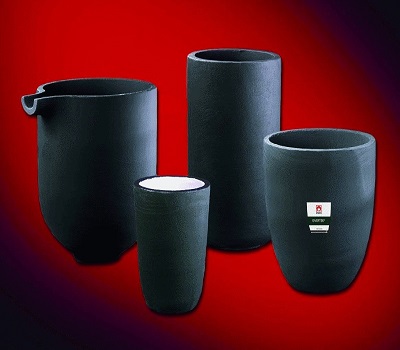

The very widely used method of melting copper in foundries is with crucible furnaces. Gas, oil-fired or induction furnaces are the most common crucible furnaces used in copper foundries. Foseco offers a complete range of crucibles for all of these furnaces.
TERCOD Crucibles :
TERCOD crucibles have -
1. Excellent mechanical strength
for handling and usage in heavy melting applications.
2. Excellent Thermal Shock
resistance to sustain range of temperatures like melting and holding applications
3. Availability in a range of sizes and shapes
4. Better thermal conductivity giving
better productivity and reduced energy consumption
TERCOD DURATEK ER Crucibles :
Premium, Specially engineered Oxidation
resistant crucibles to minimize top oxidation. Offer increased service life in
Aluminum holding furnaces, typical of High Pressure Die casting holding
furnaces. It is designed to be easier to clean, resist cracking, and extend crucible
life.
TERCOD DURATEK FF Crucibles :
TERCOD DURATEK FF* crucibles are long
life erosion resistant crucibles engineered to maximize the mechanical strength
and erosion resistance, peculiar to applications like Utensile manufacturing and
Copper scrap melting. The are best suited for fuel fired applications and offer
excellent flame attack resistance. The crucibles are easier to clean and resist
cracking thereby extending life. They offer excellent resistance to attack by
aggressive flux applications like Aluminium modification using Sodium.
CORRUGATED Crucibles :
TERCOD Crucibles with specially designed surface
offer extended life spans and superior thermal conductivity
The form of the crucibles has varied through time, with designs reflecting the process for which they are used, as well as regional variation. The earliest crucible forms derive from the sixth/fifth millennium B.C. in Eastern Europe and Iran.
A crucible is a container that can withstand very high temperatures and is used for metal, glass, and pigment production as well as a number of modern laboratory processes. While crucibles historically were usually made from clay, they can be made from any material that withstands temperatures high enough to melt or otherwise alter its contents.
Crucibles and their covers are made of high temperature-resistant materials, usually porcelain, alumina or an inert metal. One of the earliest uses of platinum was to make crucibles. Ceramics such as alumina, zirconia, and especially magnesia will tolerate the highest temperatures. More recently, metals such as nickel and zirconium have been used.